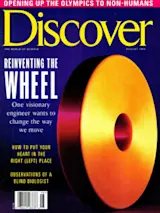They talked about a lot of things when Edmund Muskie died earlier this year, but his hole in one was not among them.
It was late 1968 when Muskie got his ace, and at the time, the former governor, sitting senator, and future secretary of state was running for vice president. Late 1968, as any active politician appreciated, was not the best historical moment to be running for any office. The Southeast Asian military offensive was at its most offensive; American cities were experiencing unrest (a term the press considered more polite than on fire); and the Chicago convention had wound up looking like a Shriners convention. And yet one evening in the midst of this, Muskie scheduled a television appearance, and the first thing he was asked about was his hole in one.
Even as a political naïf, I remember being taken aback by this. Here we were, if ...














